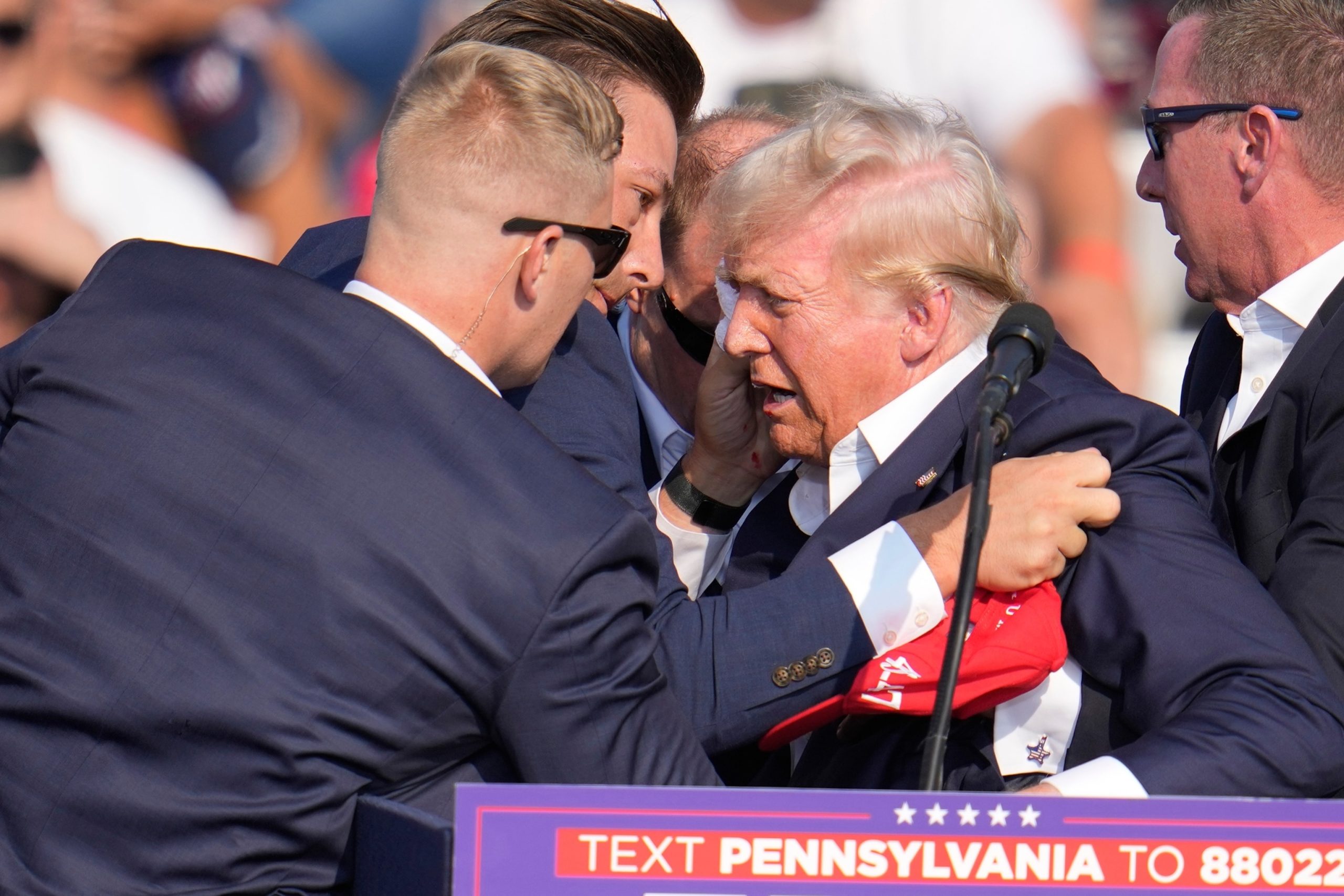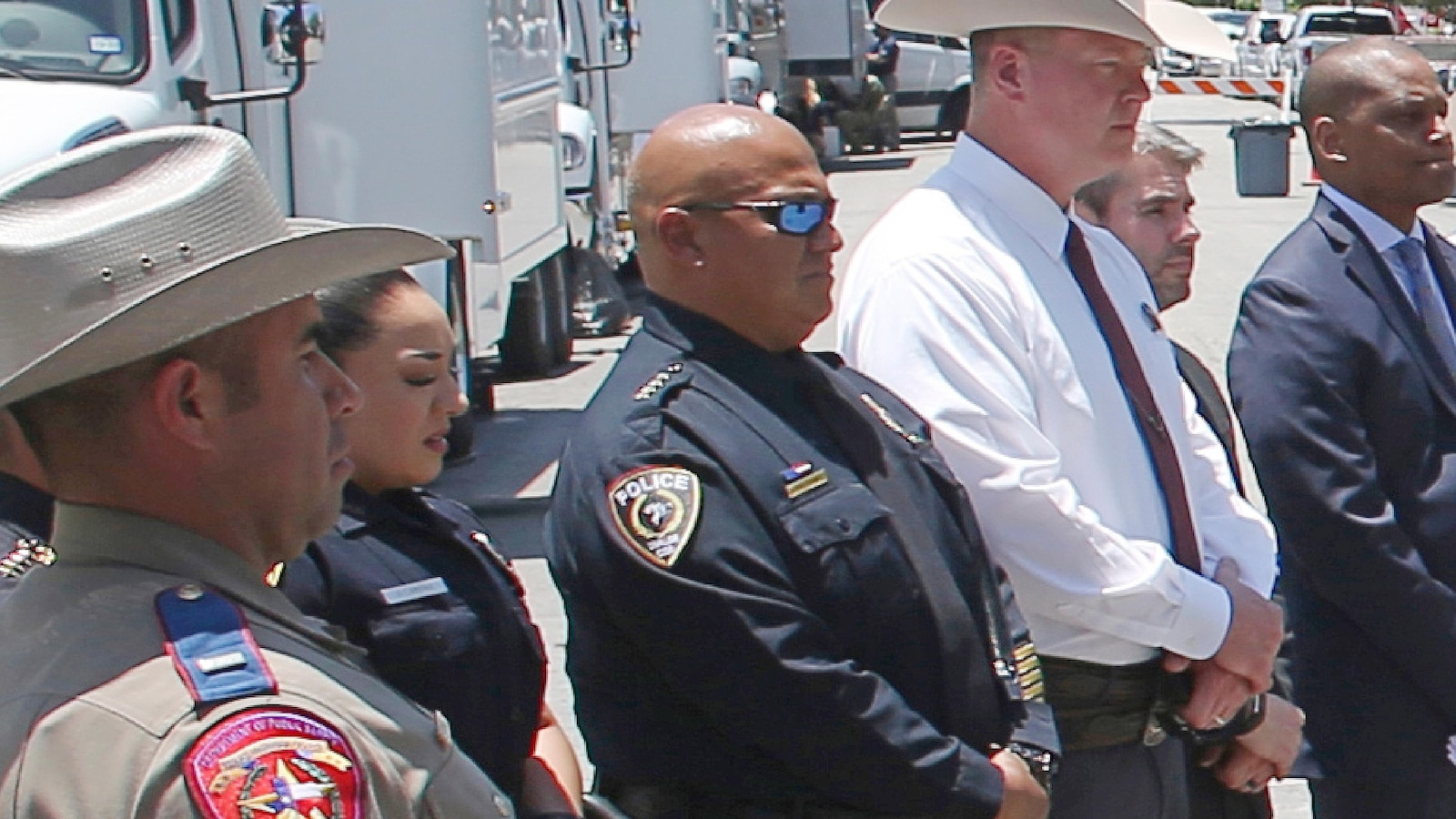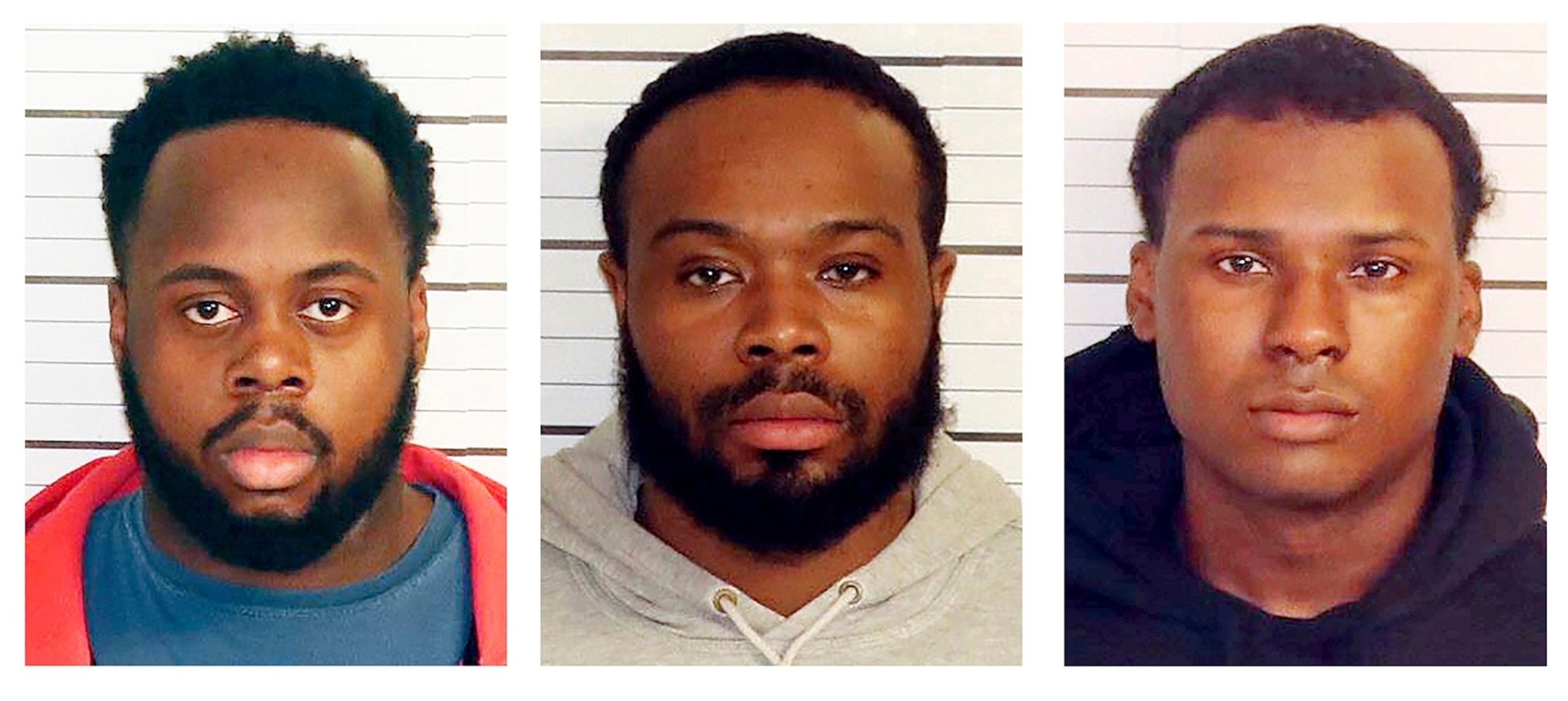There may have been radio traffic from local police that the Secret Service didn’t have access to that could’ve proved crucial to stopping former President Donald Trump from going on stage the day of the assassination attempt, the acting director of the Secret Service said Friday.
“It was so apparent to me that in this incident, in the final 30 seconds, which has been the focus of what happened before the assailant opened fire, there was clearly radio transmissions that may have happened on that local radio net that we did not have,” acting Director Ronald Rowe said at a news conference. “And so, we have to do a better job of collocating, leveraging that counterpart system, and this is going to drive our operations going forward.”
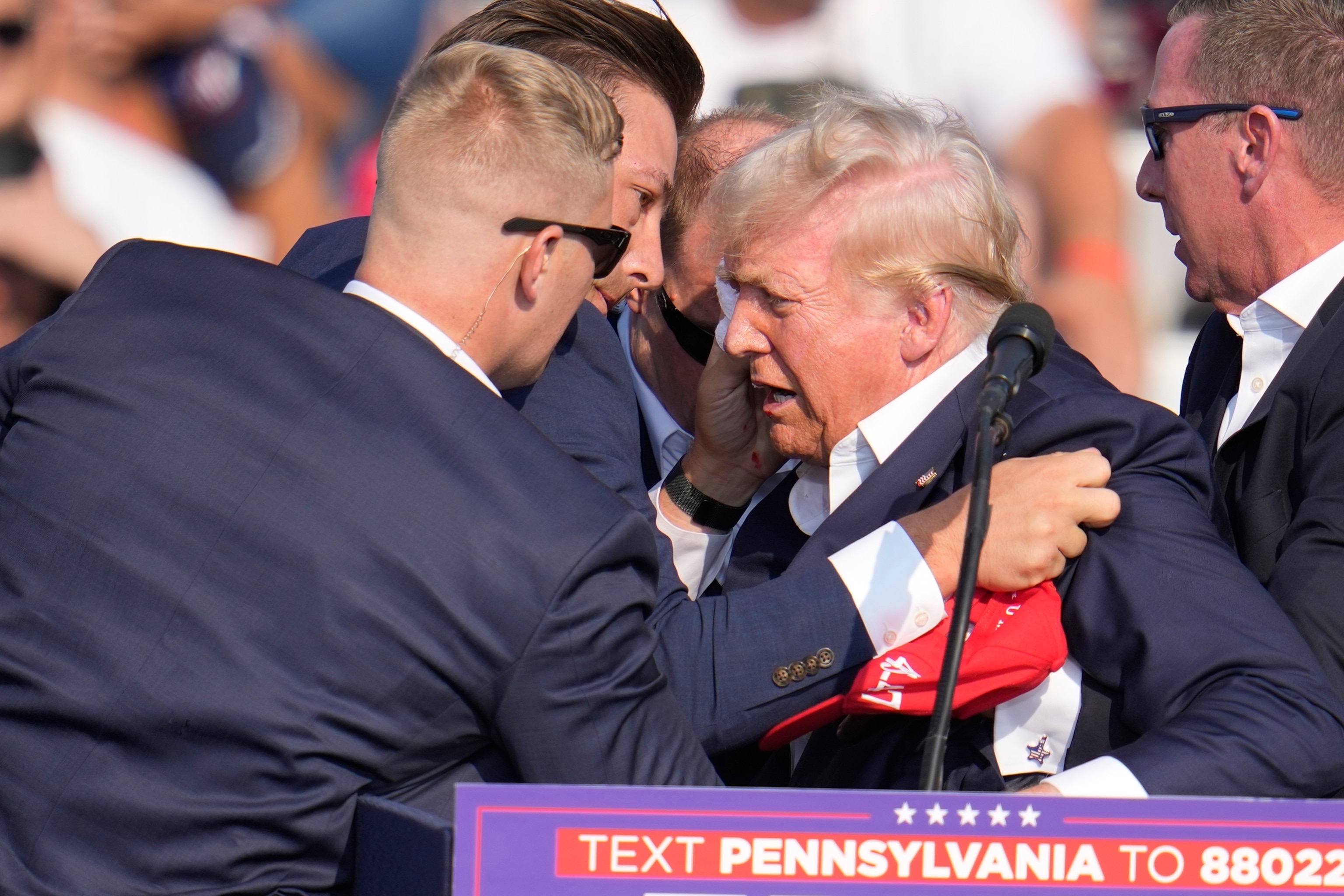
Republican presidential candidate former President Donald Trump is helped off the stage by U.S. Secret Service agents at a campaign event in Butler, Pa., on July 13, 2024.
Gene J. Puskar/AP
Rowe said the shooting was a Secret Service failure alone.
“In no way should any state or local agency supporting us in Butler on July 13 be held responsible,” he said.
One spectator was killed and two were hurt in the assassination attempt at a July 13 election rally in Butler, Pennsylvania. Trump suffered a graze wound to his ear. The gunman was killed by snipers.
Rowe said July 13 was the first time the Secret Service’s counter snipers were deployed to a Trump rally this year. Going forward, he said the Secret Service will have counter snipers at all events with presidential candidates.
Rowe said there were two command posts: one post with the Secret Service and Pennsylvania State Police, and one post with local police. He said it was “unique” that there were two security command posts, and in the future, he will make sure everyone is in the same room.
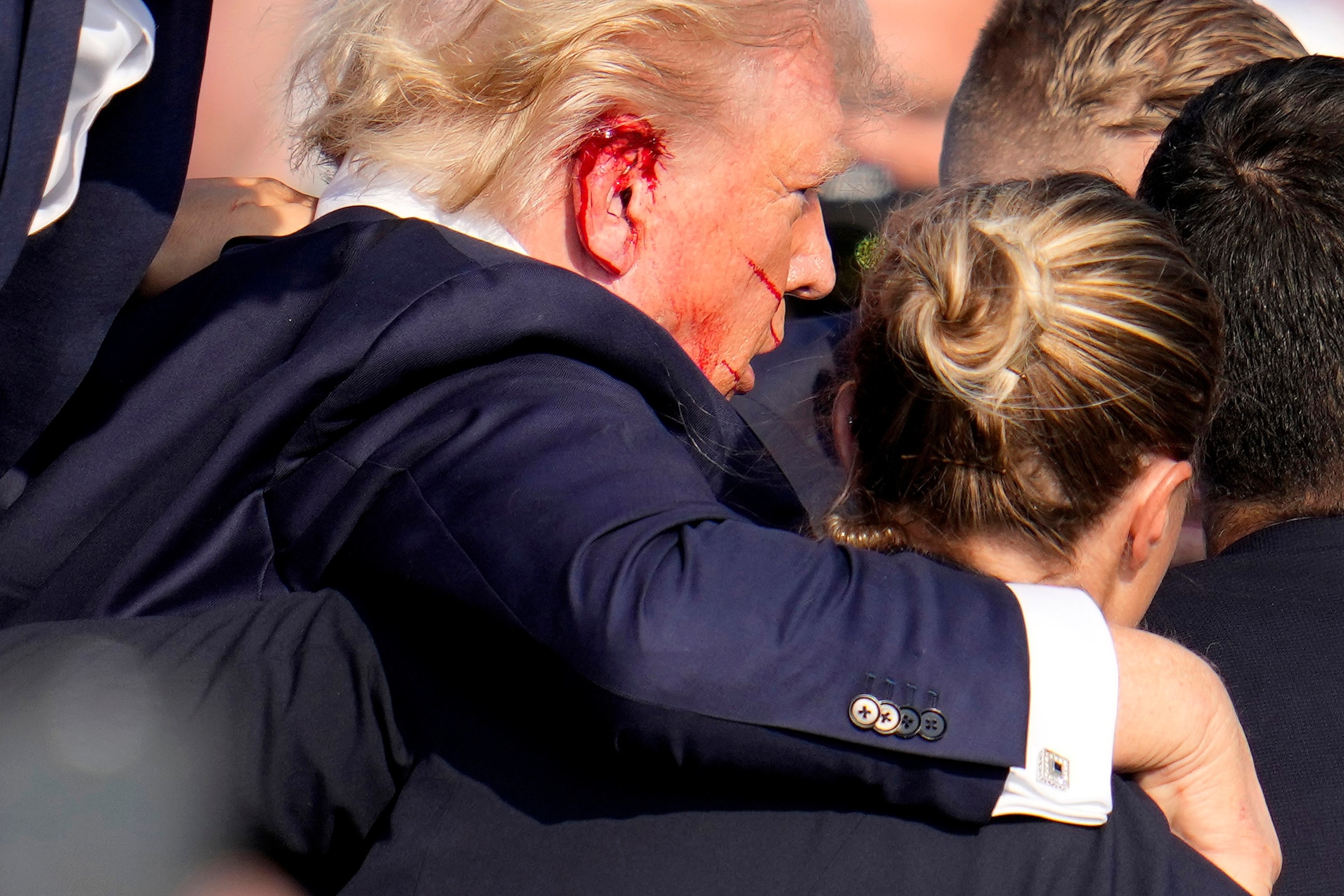
Republican presidential candidate former President Donald Trump is helped off the stage by U.S. Secret Service agents at a campaign event in Butler, Pa., on July 13, 2024.
Gene J. Puskar/AP
Rowe also walked through the timeline.
On July 8, agents from the Pittsburgh field office conducted a walkthrough of the event, he said. On July 10, the Secret Service counter sniper and technical security personnel arrived in Pittsburgh and began advanced planning for their teams, he said.
On July 12, the build-out of the campaign rally site began, he said, and continued through the early morning hours of July 13.
The morning of July 13, a site briefing was conducted with Secret Service personnel and law enforcement partners supporting the event, Rowe said. Secret Service personnel took their posts and a technical security sweep of the protective site started before the site opened to event staff, vendors and the public, he said.
About 15,000 people came to the rally, Rowe said.
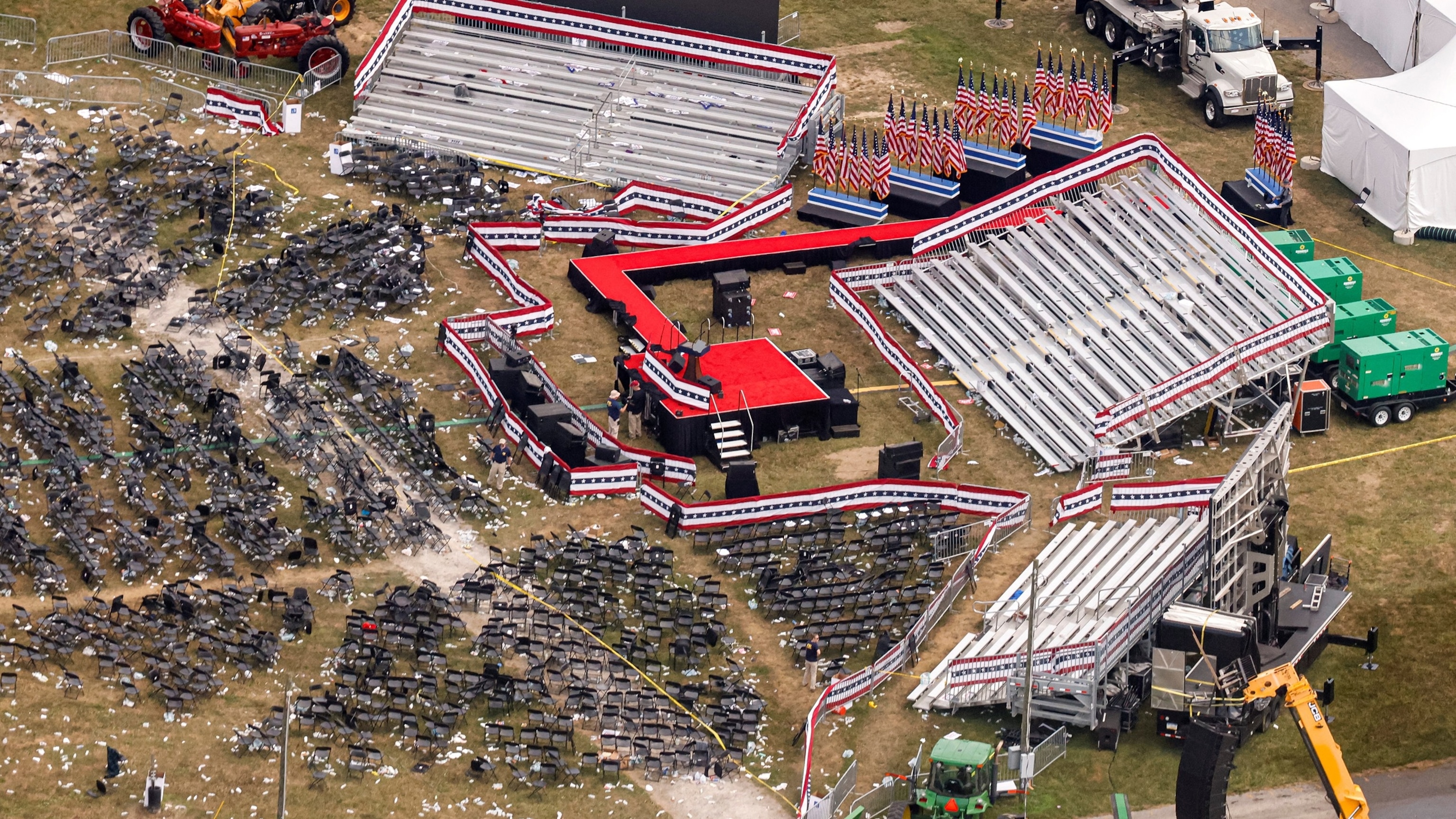
An aerial view shows the site during the police investigation into gunfire at a campaign rally of Republican presidential candidate and former President Donald Trump, in Butler, Pa., July 14, 2024.
Brendan Mcdermid/Reuters
At 5:53 p.m., the Secret Service counter sniper team leader texted the Secret Service counter sniper teams that local police were looking for a suspicious individual who was outside of the perimeter, lurking around the AGR building, Rowe said.
“At this time, Secret Service personnel were operating with the knowledge that local law enforcement was working on an issue of a suspicious individual,” Rowe said.
“Neither the Secret Service counter sniper teams, nor members of the former president’s security detail, had any knowledge that there was a man on the roof of the AGR building with a firearm,” he said.
At 6:11 p.m., the gunman’s first shots were fired, he said. Within three seconds, Trump’s detail rushed the stage and shielded him with their own bodies, Rowe said.
He said video from that day affirmed there should’ve been better coverage.
“We should have had better protection for the protectee. We should have had better coverage on that roofline,” Rowe said.
Going forward, Rowe said, he’s directed each special agent in charge — who oversee the Secret Service’s field offices across the U.S. — to be precise and clear with state and local partners.
“We’re not going to have this assumption that, ‘Oh, we think that they have it,’ and we’re going to we’re going to work together,” he said. “We’re going to have good, hard, fierce conversations about what we’re going to do, and then we’re going to go out there, and we’re going to make all of these venues secure moving forward.”
The Secret Service recently revealed that they were unable to access radio traffic during their investigation into the shooting incident near the White House involving President Donald Trump. This lack of access to critical information has raised concerns about the agency’s ability to effectively protect the president and respond to potential threats.
The incident occurred on Monday afternoon when a man approached a Secret Service checkpoint near the White House and claimed to have a weapon. The suspect was shot by Secret Service agents after allegedly drawing a weapon and refusing to comply with their commands. President Trump was quickly evacuated from the briefing room where he was addressing reporters.
In the aftermath of the shooting, the Secret Service faced criticism for their handling of the situation and their inability to provide real-time updates on the incident. The agency later revealed that they were unable to access radio traffic during the incident due to technical issues, which hindered their ability to coordinate their response and communicate with other law enforcement agencies.
This revelation has raised questions about the effectiveness of the Secret Service’s communication systems and their ability to respond to potential threats in a timely manner. In a statement, the agency acknowledged the importance of having access to radio traffic during critical incidents and pledged to address the issue to ensure that it does not happen again in the future.
The lack of access to radio traffic during the Trump shooting investigation highlights the need for improved communication systems and coordination among law enforcement agencies. In today’s fast-paced and constantly evolving security environment, it is essential for agencies like the Secret Service to have access to real-time information in order to effectively protect the president and respond to potential threats.
Moving forward, it is crucial for the Secret Service to address any technical issues that may have contributed to their lack of access to radio traffic during the Trump shooting investigation. By improving their communication systems and coordination with other law enforcement agencies, the Secret Service can enhance their ability to protect the president and ensure the safety of all individuals under their watch.
